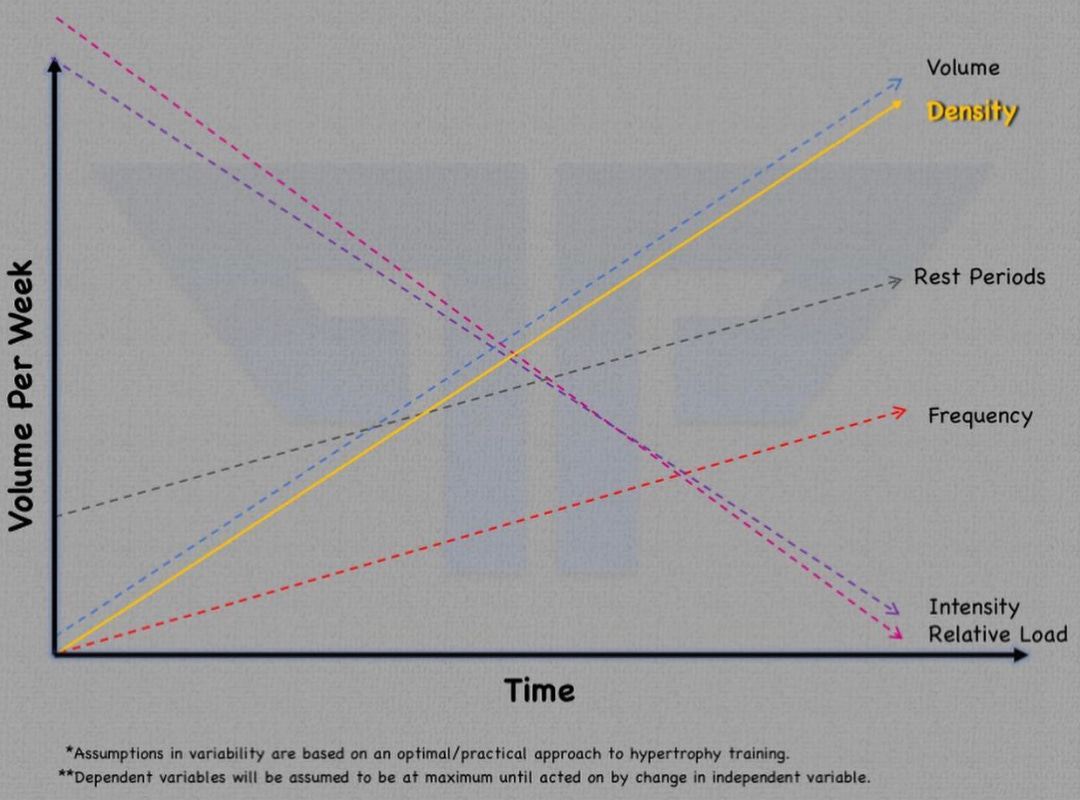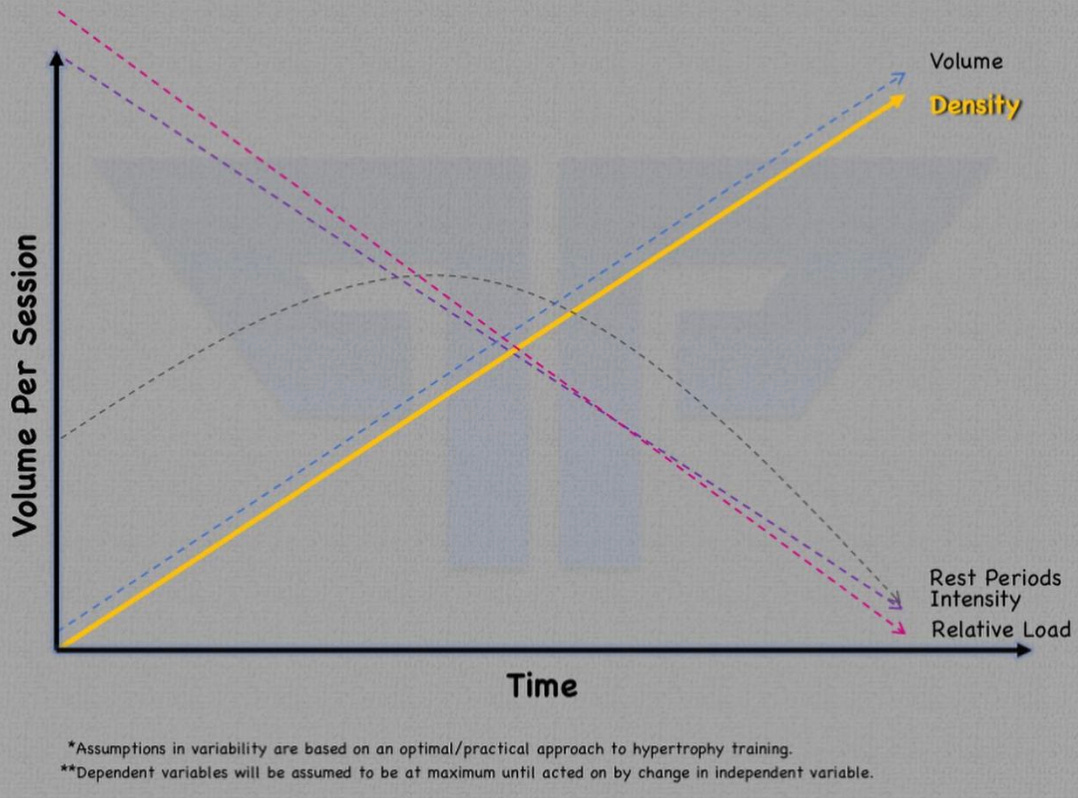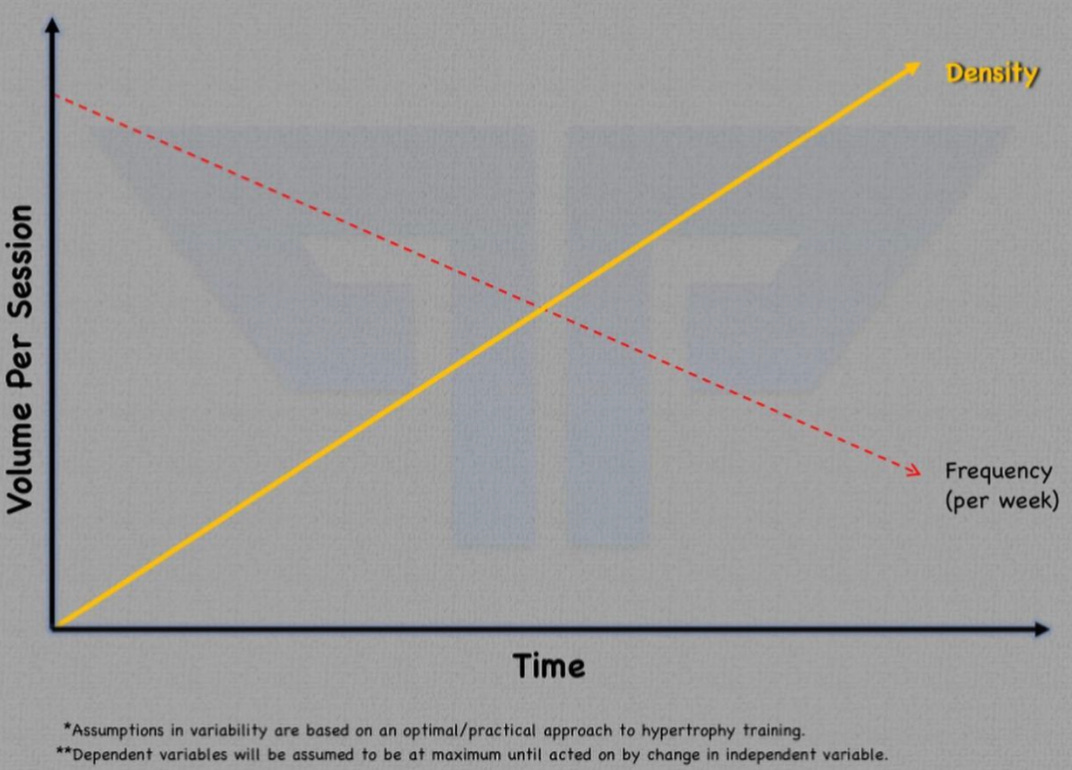A measure of the amount of work done in a given time.
Next up — linear changes in DENSITY (both weekly and single sessions).
- All set volume is performed on a single bodypart/lift versus divided up systemically (i.e. all sets inferred to be from leg extension/biceps curls/etc)
- Volume- 1:1 ratio with density
- Frequency=-2x/wk
- Intensity- 3RIR
- Relative Load- 70% of 1RM
- Rest Periods- 3 min between sets
The effects discussed — and graphed — are going to be a function of an isolated comparison between our independent variable (here, density) and a dependent variable (we will evaluate them one at a time). The above parameters will act as standardization values when those variables are not being compared directly to volume.
Volume
Because volume is a component of density, it must change proportionally with changes in density, provided the time component (the other aspect of the density formula) remains unaltered.
Frequency
- Weekly– As we start to pack more work into a training week, this necessitates an increase in frequency to accommodate. This is the same as a linear increase in volume because our unit of time (i.e. a training week) is not changing.
- Intrasession– When a session becomes more dense, this can actually spill into the larger issue of how we appropriate weekly volume. Increasing the amount of work being done in a single training day means more significant blows to our systems during each bout, which will take longer to recover from. In other words, we can overload less frequently, and thus sessions must be more spaced-out.
Intensity
In line with the intensity versus volume argument, increasing the density of training (no matter the unit of time measurement) will mean that the average proximity to failure must decrease. When putting rigid bounds on the time component (like we have here), intensity will be even more inversely affected than with simply changing the number of sets.
Relative Load
When we only increase volume, there is an assumption of increased density. However, adjusting for the “squeeze” factor created by an inflexible time component causes a much more rapid decrease in the ability to maintain higher relative loads.
Rest Periods
Just like with volume, rest periods are intimately linked to density. And as volume must increase with a rising density, rest periods must become shorter due to the restriction of time. But we still have the same primary issue here that we encountered with volume — namely, the obligation to maintain standardization with the other variables. Having this in the background means that rest periods for density will follow similar shaped lines as with volume.
Though this may seem at face value to just be a rehashing of our discussion on volume, density should be thought of as a separate variable (though it is dictated by volume to a large degree). We can manipulate the density of our training without causing changes in volume when time is used as a lever (though we haven’t chosen to do so in this thought experiment). In the real world, this can highly affect how we approach our training and the stimulus/effects we can expect to receive from it.
Now that we have a firm grasp on both volume and density, it should be easy to see how the intelligent integration and manipulation of each within individualized programming can be used to great effect.



